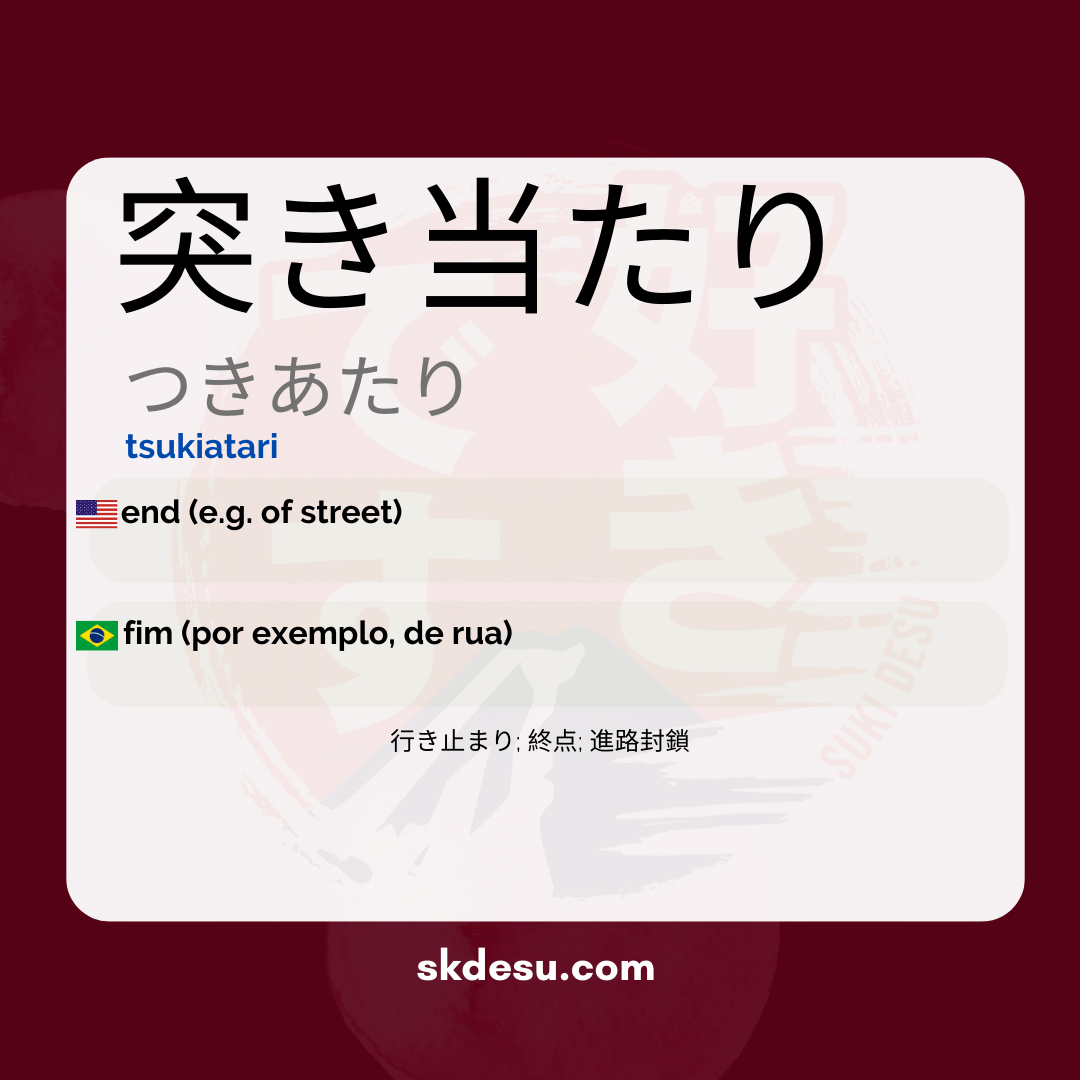Translation and Meaning of: 突き当たり - tsukiatari
The Japanese word 突き当たり (つきあたり, tsukiatari) is a term that frequently appears in everyday situations, especially when it comes to directions and location. If you have ever studied Japanese or visited Japan, you have probably encountered this expression on signs, maps, or in conversations. But what does it mean exactly? And how is it used in daily life?
In this article, we will explore the meaning, origin, and practical uses of 突き当たり. Additionally, we will see how this word fits into Japanese culture and some tips for memorizing it efficiently. Whether you are learning Japanese or simply curious about the language, this guide will help you better understand this very useful expression.
Meaning and usage of 突き当たり
突き当たり is a compound word made up of the kanji 突 (tsuku, "to hit", "to push") and 当たり (atari, "to hit", "to find"). Together, they form a term that means "end", "the end of a path" or "the point where something terminates". It is commonly used to indicate the end of a street, corridor, or any linear route.
In everyday life, you will hear phrases like "突き当たりを右に曲がってください" (tsukiatari o migi ni magatte kudasai), which means "Turn right at the end of the corridor." This expression is very useful for giving or following directions, whether in train stations, shopping malls, or even inside houses and offices.
Origin and structure of the word
The origin of 突き当たり is linked to the verb 突き当たる (tsukiataru), which means "to collide with something" or "to reach the end of a path." The nominalized form 突き当たり retains this idea of a point where one can no longer advance. This construction is common in Japanese, where verbs are transformed into nouns to indicate places or states resulting from an action.
It is noteworthy that the kanjis used reinforce the meaning. The character 突 conveys the idea of impact or encounter, while 当たり suggests a point of contact or ending. This visual combination helps to understand why the word is used to describe places where a path ends.
Tips for memorizing and using correctly
An effective way to remember 突き当たり is to associate it with practical situations. Imagine yourself walking down a long hallway: when you reach the end of it, there is nowhere to go but to turn to one side. This mental image helps to fix the meaning of the word. Another tip is to practice with simple sentences, such as "The supermarket is at the end of the way" (スーパーは突き当たりです, sūpā wa tsukiatari desu), indicating that the supermarket is at the end of the path.
It is important to note that 突き当たり is not used to describe the end of events or abstract situations – its use is always related to physical spaces. Additionally, in some regional dialects, such as the one from Osaka, you may hear variations in pronunciation, but the meaning remains the same.
Vocabulary
Expand your vocabulary with related words:
Synonyms and similar words
- 行き止まり (Ikidomari) - End of a path; a place where it is not possible to go further.
- 終点 (Shūten) - Final point; a location where a route ends, often used in transportation.
- 進路封鎖 (Shinro fūsatsu) - Blocking of passage; obstruction of a route, often for security reasons.
Related words
Romaji: tsukiatari
Kana: つきあたり
Type: noun
L: jlpt-n2
Translation / Meaning: end (for example, of the street)
Meaning in English: end (e.g. of street)
Definition: A dead end of a place or road.
Quick Access
- Vocabulary
- Writing
- Sentences
How to Write in Japanese - (突き当たり) tsukiatari
See below a step-by-step guide on how to write the word by hand in Japanese. (突き当たり) tsukiatari:
Example Sentences - (突き当たり) tsukiatari
See below some example sentences:
Nenhum resultado encontrado.
Other Words of this Type: noun
See other words from our dictionary that are also: noun

